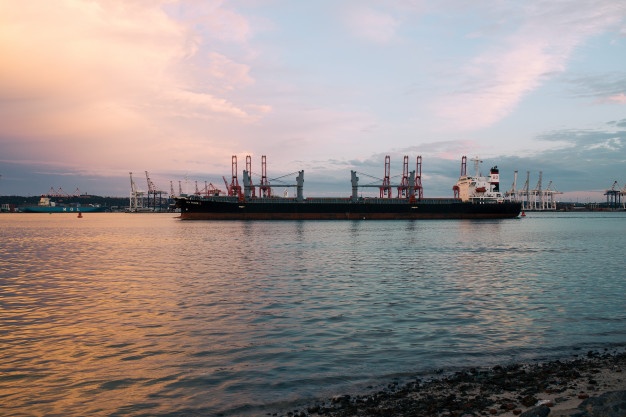Distribution of global natural gas resources?
The distribution of global natural gas reserves is concentrated. By 2020, the global recoverable reserves of proven natural gas were 188.1 trillion cubic meters, mainly concentrated in the Middle East and CIS (mainly Russia). Under the background of uneven distribution of resources, the global natural gas production capacity is concentrated, with the United States and Russia taking the lead, accounting for 23.73% and 16.57% of the global natural gas production respectively in 2020.
Global natural gas market price trend?
In 2021, affected by extreme weather, economic recovery, lack of alternative fuels and other factors, the global demand for natural gas increased significantly, the natural gas market was in short supply, and the price continued to rise. Since 2021, the price of natural gas futures of TTF in the Netherlands and NBP in London has exceeded US $70 / mmbtu (about 23933 yuan / ton), and the price of JKM in Japan and South Korea has risen to US $48.92 / mmbtu (about 167257 yuan / ton). From the beginning of 2022 to April 14, the average prices of TTF in the Netherlands, NBP in London and JKM in Japan and South Korea were US $33.01/mmbtu (about 112861 yuan / ton), US $30.88/mmbtu (about 105579 yuan / ton) and US $30.85/mmbtu (about 105476 yuan / ton), with a year-on-year increase of 404.74%, 344.32% and 256.65% respectively. The price trend of henryhub is relatively stable, but since 2022, affected by the cold wave, the output has remained low and the price has continued to rise. From the beginning of 2022 to April 14, the average price of henryhub is $4.85/mmbtu (about 1658.2 yuan / ton, up 79.6% year-on-year compared with 2021). With the tense situation in Russia and Ukraine and the continuous high demand for natural gas in Asian countries, it is expected that the global natural gas price will remain high and volatile in 2022.
Global natural gas trade transportation mode?
International natural gas trade mainly includes LNG (liquefied natural gas) and PNG (pipeline natural gas). In recent years, due to its convenient transportation and high flexibility, the transportation volume of LNG has increased significantly. The annual compound growth rate of LNG trade volume from 2000 to 2020 has reached 4.7%. By 2020, the LNG trade volume has reached 489.71 billion cubic meters, which has exceeded the PNG trade volume.
Global natural gas import and export pattern?
The global natural gas import and export pattern is stable. Russia, the United States and the Middle East are the main natural gas export places in the world, and the import volume of Europe and Asia is high. From the perspective of LNG import and export, Qatar and Australia are traditional LNG exporters, accounting for 43.4% of the total global LNG exports; The export volume of LNG in the United States has increased rapidly. According to shell, the export volume of liquefied natural gas in the United States increased by 24 million tons to 73.6 million tons in 2021, making it the third largest LNG exporter in the world. At present, Asia is the main importer of LNG, accounting for 71.4% of the total global LNG imports. Japan, China and South Korea are the largest LNG importers. In 2021, China's LNG imports reached 81.4 million tons, surpassing Japan's 75 million tons, becoming the first in the world. From the perspective of PNG import and export, Europe and Russia are the main PNG import and export regions in the world, and more than 50% of European natural gas imports depend on Russian pipeline gas.
Construction and operation of LNG import and export infrastructure?
Based on the analysis of the liquefaction capacity of LNG carriers, liquid plants and LNG terminals, with the growth of LNG trade demand, the number of LNG carriers, liquid plants and terminals has increased significantly. At present, the global LNG terminals are mainly concentrated in Asian countries that rely on LNG imports, and their regasification capacity accounts for 58.57% of the global total. At the same time, with the expansion of LNG trade, Myanmar, Germany, Croatia and other countries have successively started the construction of LNG terminals, and the coverage of terminals is expected to continue to expand.
Investment suggestion: with the continuous increase of international natural gas trade volume, LNG has become the mainstream mode of natural gas trade. At the same time, under the influence of supply and demand factors, the international natural gas price continues to rise, especially the European natural gas price continues to fluctuate at a high level under the influence of Russia Ukraine time, and the rising trend of natural gas price may continue in the future. At the same time, due to the huge difference in natural gas prices between Europe and the United States, it brings opportunities for international trade and natural gas resale. At the current time, it is mainly recommended that China's leading natural gas company [ Enn Natural Gas Co.Ltd(600803) ] Enn Natural Gas Co.Ltd(600803) has a complete industrial chain of upstream, middle and downstream natural gas, with diversified upstream gas supply sources. The midstream plans to acquire 90% of the equity of Zhoushan LNG terminal, and the downstream urban fuel business has a national layout. At present, the company has actively expanded into the field of comprehensive energy services through a large number of high-quality industrial customers accumulated over the past few decades, so as to further make a positive contribution to the company's performance. At the same time, the company has long had a layout in the international natural gas market through the LNG terminal, which is expected to benefit from the opportunities in the field of international natural gas trade under the background of rising natural gas prices in Europe.
Risk tips: the risk of continuous rise in natural gas price, geopolitical risk, policy promotion less than expected risk, LNG import and export trade infrastructure less than expected risk.
